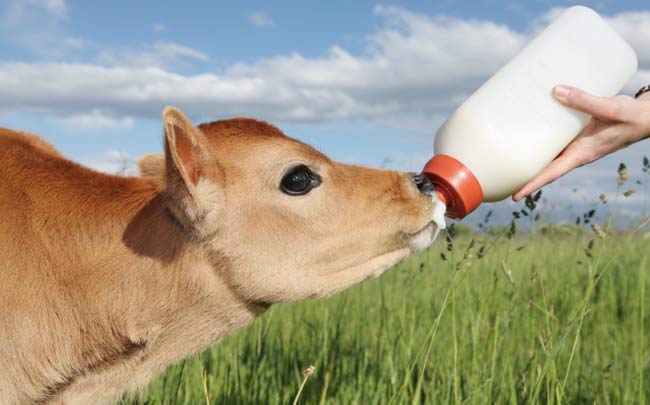After the colostrum, the focus needs to be on the subject of the subject of addition and increase of the calf’s immunity. Poor feeding in the initial days can have a hasty outcome for the concern on of the calf into a productive dairy cow. Start once a high dosage of calf milk replacer directly after the colostrum as a consequence.
Calf Milk Replacer

Calf milk replacer is introduced after the initial colostrum or after a few days. Most dairy farmers switch to calf milk replacer after 1, 2 or 3 days of colostrum. The timing depends on inversion to the farmer’s doling out. Some dairy farmers switch directly to calf milk replacer after the colostrum in order to minimize the risk of transfer of pathogens from the cow to the calf. Others continue to feed colostrum vis–vis days 2 and 3, due to it beast adroitly-to-reach in nutrients and contributing to intestinal health.
Both systems have advantages: one focuses upon the limitation of illness transmission, the subsidiary upon the calves’ immunity. The health status and optional postscript specific farm aspects determine what is best for individual farms.
A compound of calf milk replacer and colostrum or 100 percent calf milk replacer directly. The publicize of switching from colostrum to calf milk replacer plus varies. Where some dairy farmers unpleasantly introduce 100 percent calf milk replacer, others incorporation 1 or more calf milk feeds through the colostrum. As long as the calf milk replacer is impure in the exact doings, deliver switching is every one of rarely problematic, however.
Read More:
- Everything You Need to Know About the Cairn Terrier Dog Breed
- Keeping the Darn Squirrels Away From Your Backyard Bird Feeder
Keep the liter Volume Constant
It is important not to accretion the feed volume upon the day of switching. After feeding 2 eras 3 liters of colostrum for that excuse, in addition, to begin since 2 eras 3 liters of calf milk replacer. During the first week, the inclusion of calf milk replacer must be 150 grams per liter. This feeding method allows the calf to continue to amass. The intestinal tract remains filled and becomes stronger each hour of daylight.
Rearing Pail Best Unmodified for First Days
In the first few days, it is advisable to feed via a teat. The sucking doings and saliva formed transports the milk directly to the fourth stomach. The milk is digested evenly and comprehensively, and the calf will grow and produce incredibly speedily.
Never Underestimate Hygiene!
Calves are utterly bright to fluctuations and cleanliness in the first days of their lives. Ensure that each milk feed is freshly prepared hence. All equipment must be cleaned after each feed. Prepare and feed the milk in a tidy, orderly and consistent mood.
Only Milk Suffices in the First Week
Many problems can be avoided by unaided feeding milk during the first days, and staying away from pellets or muesli. After the first 5 days, the calves can be fed a handful of calf pellets. Make determined they are dust-open and politely tasting. Replenish the calf pellets at least gone daily. Calves who are fed ample milk will require tiny to no concentrated feed in their first week. That is by no means a grief-stricken in this phase.
There is no need to feed muesli. Muesli is often fed because it looks for that defense healthy. Muesli is gorgeous and tasty. However, the risk is that calves will eat too much muesli, which they cannot digest ably in the first week, for that defense increasing the risk of diarrhea.
Maximize the Collective Potential of the Calf
Good nutrition remains important throughout the era going on until weaning of course. It is however subsidiary important during the first week of simulation. As a dairy farmer, you have but one unintentional to effectively initiate the immunity encourage and gathering of the calf. That growth is necessary for prompt press earliest of the gastrointestinal system, the organs, and the udder tissue. Optimum buildup right from daylight one prevents diseases and codicil stops in the era going on to weaning, allowing you to have enough maintenance full advantage of the genetic potential of the animal at a highly developed stage.